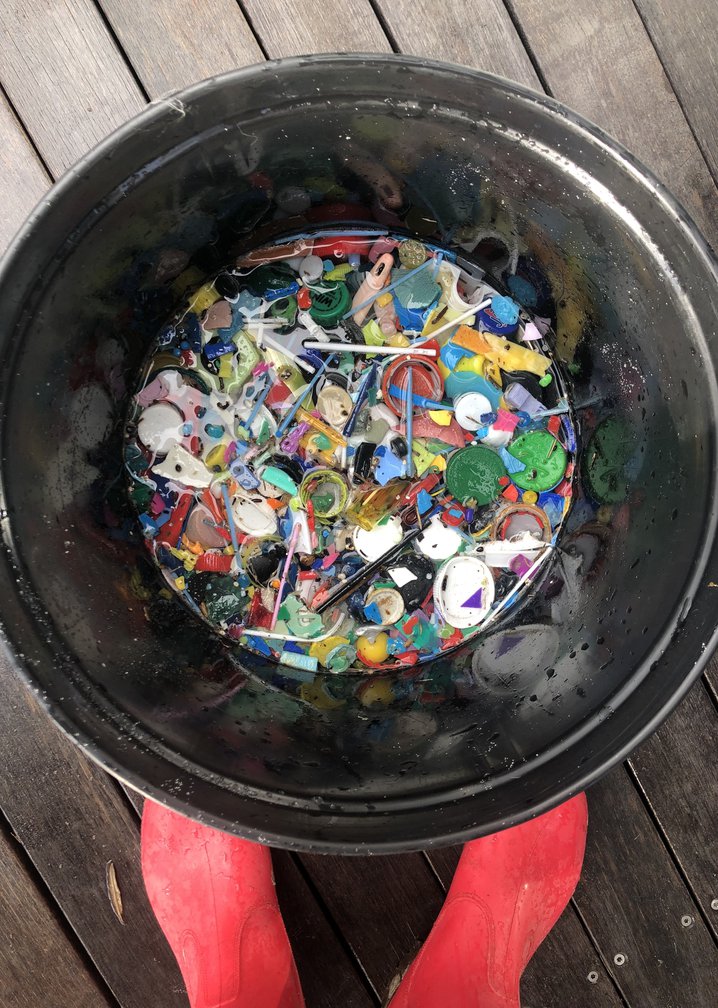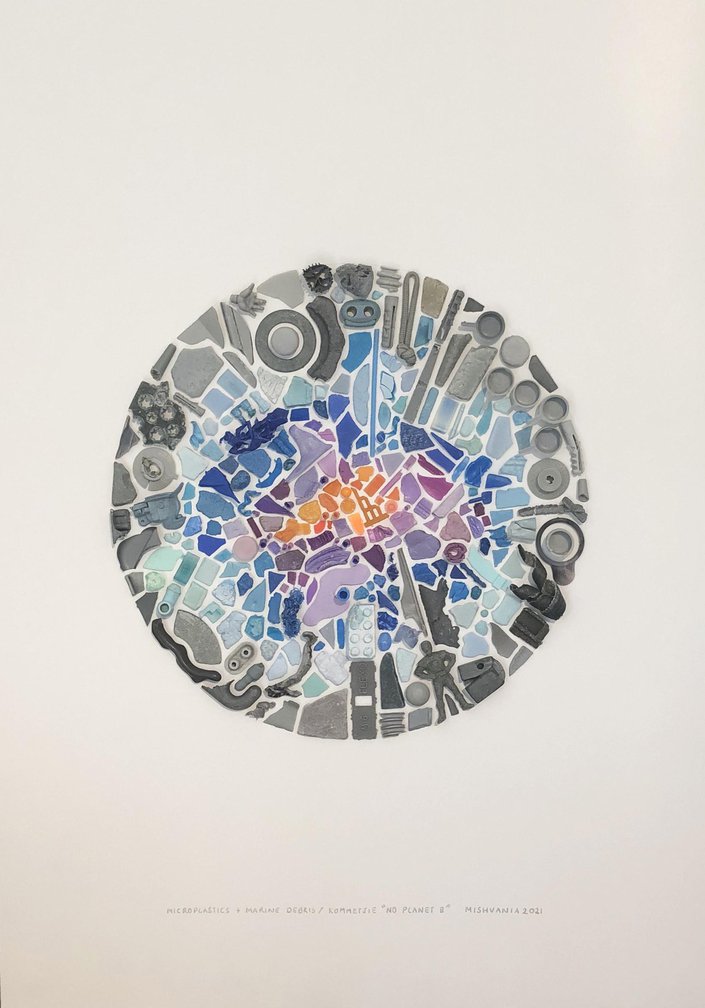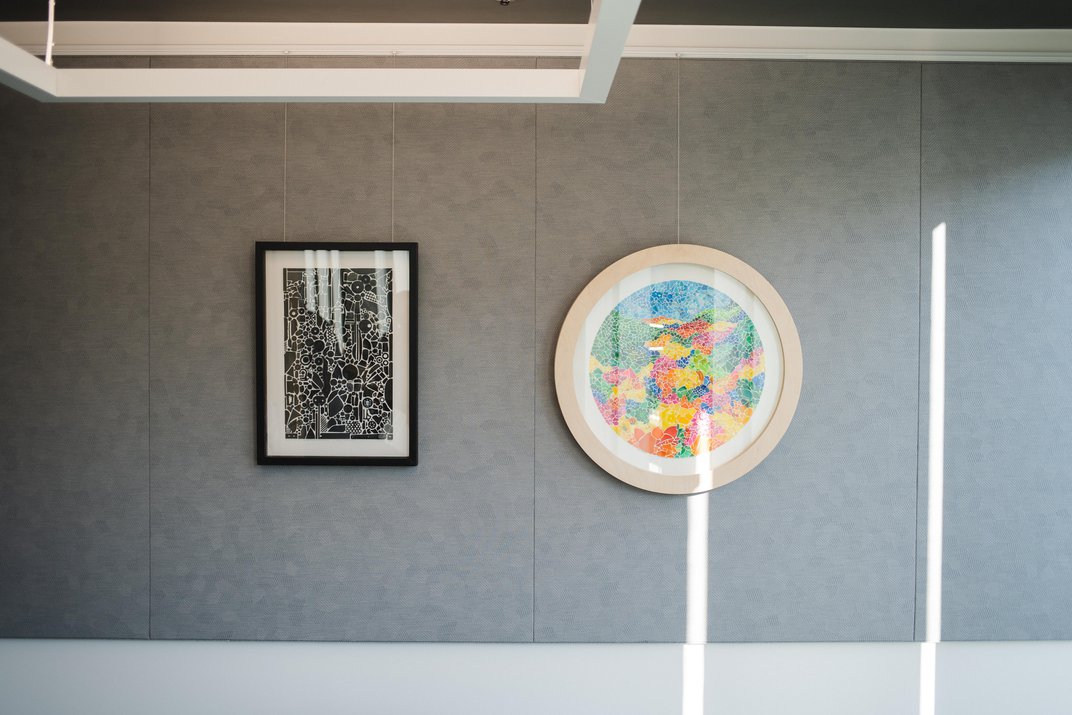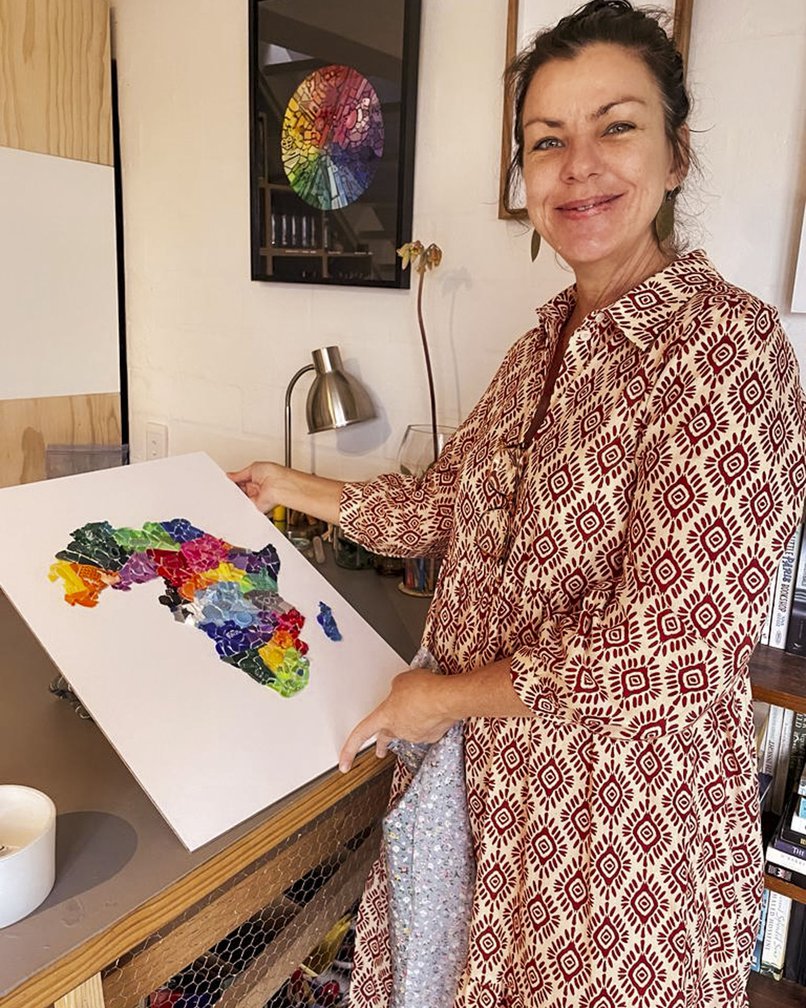article In conversation with
Michelle Beattie
In conversation with
Michelle Beattie
Michelle Beattie

In conversation with Michelle Beattie about
art as activism and the importance of educating
the next generation about environmental concerns.
art as activism and the importance of educating
the next generation about environmental concerns.
In conversation with Michelle Beattie about
art as activism and the importance of educating
the next generation about environmental concerns.
Michelle Beattie, also known as MISHVANIA ART, is a South African artist and lifelong ocean enthusiast. Her practice is a call to action to save our seas. Her works are colourful and intricate, drawing the viewer in and creating a moment to reflect on society's dangerous impact on the planet.
We found Michelle through an open call back in 2021, searching for the most exciting creative talent living and working in South Africa. Procuring three of her pieces on behalf of South African firm Ninety One's London headquarters, we recently caught up with Michelle to learn more about her dedication to creativity and environmentalism.
We found Michelle through an open call back in 2021, searching for the most exciting creative talent living and working in South Africa. Procuring three of her pieces on behalf of South African firm Ninety One's London headquarters, we recently caught up with Michelle to learn more about her dedication to creativity and environmentalism.

Artiq Your beach plastic creations serve as a powerful reminder of our impact as consumers on the planet. Can you tell us more about how you use art to show people what's happening in the ocean and raise awareness about the issues caused by plastic pollution?
Michelle My ocean plastic art sculptures start with a concept based around the negative impact we as consumers are imposing onto the planet, specifically the ocean. For instance, I raise awareness on how the burning of fossil fuels leads to global warming which impacts the ocean temperatures causing coral reef bleaching.
Many are not aware of how important corals and the ocean are in the absorption of carbon dioxide and the production of oxygen; the coral reefs are the main producers of the oxygen that we breathe. If we continue to produce single-use plastics by burning fossil fuels, we are doomed.
My art pieces are visually satisfying to look at and draw you in with colour and the specific placements of the ocean-found plastics. Once up close, one will find many familiar plastic items that once had a single use and are either in the act or have broken down into microplastics.
Michelle My ocean plastic art sculptures start with a concept based around the negative impact we as consumers are imposing onto the planet, specifically the ocean. For instance, I raise awareness on how the burning of fossil fuels leads to global warming which impacts the ocean temperatures causing coral reef bleaching.
Many are not aware of how important corals and the ocean are in the absorption of carbon dioxide and the production of oxygen; the coral reefs are the main producers of the oxygen that we breathe. If we continue to produce single-use plastics by burning fossil fuels, we are doomed.
My art pieces are visually satisfying to look at and draw you in with colour and the specific placements of the ocean-found plastics. Once up close, one will find many familiar plastic items that once had a single use and are either in the act or have broken down into microplastics.

Artiq How did your childhood experiences and your later discovery of plastic nurdles influence your decision to take action and create art with beach plastic? And what encouraged you to continue creating many pieces of art?
Michelle I grew up in a small seaside village called Plettenberg Bay on the East Coast of South Africa. I spent a lot of my time on the beach collecting shells and what I called back then (40yrs ago) “Mermaids Tears”.
I was always curious as to what these little round pellets were and where they came from until 10 years ago when walking on the beach in Kommetjie where I now live with my husband and children, I came across some “Mermaids Tears”. My kids and I collected some and once home we decided to investigate, only to find out the eye-opening reality that these pesky little pellets called Plastic Nurdles are the raw form of plastic before they get manufactured into plastic products.
From that day onwards I pledged to start reducing our plastic footprint by saying no to single-use plastics and we gradually started to implement some big changes by choosing more Earth-friendly alternatives. During this time, I had been trying to raise awareness through beach clean-ups and posting my plastic finds on social media but it wasn't getting much traction until I started making art at the end of 2020.
As I continue to make my art sculptures, I have found so many people across the globe in the same plight; friends and family alike who have come to me and said how they have started making changes in their lives too, cleaning beaches, recycling, being more mindful as consumers because of my influence and eye-opening art pieces. It was then that my art journey really began and when I finally felt that I was giving the ocean its much-needed voice.
Michelle I grew up in a small seaside village called Plettenberg Bay on the East Coast of South Africa. I spent a lot of my time on the beach collecting shells and what I called back then (40yrs ago) “Mermaids Tears”.
I was always curious as to what these little round pellets were and where they came from until 10 years ago when walking on the beach in Kommetjie where I now live with my husband and children, I came across some “Mermaids Tears”. My kids and I collected some and once home we decided to investigate, only to find out the eye-opening reality that these pesky little pellets called Plastic Nurdles are the raw form of plastic before they get manufactured into plastic products.
From that day onwards I pledged to start reducing our plastic footprint by saying no to single-use plastics and we gradually started to implement some big changes by choosing more Earth-friendly alternatives. During this time, I had been trying to raise awareness through beach clean-ups and posting my plastic finds on social media but it wasn't getting much traction until I started making art at the end of 2020.
As I continue to make my art sculptures, I have found so many people across the globe in the same plight; friends and family alike who have come to me and said how they have started making changes in their lives too, cleaning beaches, recycling, being more mindful as consumers because of my influence and eye-opening art pieces. It was then that my art journey really began and when I finally felt that I was giving the ocean its much-needed voice.

Artiq Your tagline, "If I don't show you, you will not see," emphasizes the importance of education and raising awareness about ocean plastic. How do you believe your art can play a role in educating people and encouraging them to make alternative choices as consumers?
Michelle “If I don't show you, you will not see” is me taking something “ugly” from a dire situation and turning it into something pretty. My art will hang in homes/offices as conversational pieces, making you look deeper into this issue and creating a platform to ask questions and come up with viable solutions. If each of us makes small changes, we will together make a big impact! The Butterfly Effect. Together we are stronger, we all just need to try harder.
Michelle “If I don't show you, you will not see” is me taking something “ugly” from a dire situation and turning it into something pretty. My art will hang in homes/offices as conversational pieces, making you look deeper into this issue and creating a platform to ask questions and come up with viable solutions. If each of us makes small changes, we will together make a big impact! The Butterfly Effect. Together we are stronger, we all just need to try harder.

'Black Fragments' and 'Namaqualand', curated by Artiq for Ninety One
Artiq Last year, Artiq had the pleasure of showcasing four of your works in an art collection installed at South African global asset manager Ninety One's London office. As an artist, what do you see as your role and responsibility in addressing environmental consciousness?
Michelle My role as an artist will be to continue raising awareness through my art by sharing and opening the dialogue about how we can make positive and effective changes. It is all good and well that we as consumers start making big changes in our lives but ultimately what we need is also for the large corporates, stakeholders and key industry players to make some very necessary conscious changes, find solutions that have longevity, mostly for the future of the planet. Join forces, work together, stop overproduction and produce items that will last years, not months.
Michelle My role as an artist will be to continue raising awareness through my art by sharing and opening the dialogue about how we can make positive and effective changes. It is all good and well that we as consumers start making big changes in our lives but ultimately what we need is also for the large corporates, stakeholders and key industry players to make some very necessary conscious changes, find solutions that have longevity, mostly for the future of the planet. Join forces, work together, stop overproduction and produce items that will last years, not months.

Artiq Ocean plastic is a catastrophic issue that poses a great threat to the environment, marine life, and our oceans. Are there specific messages or emotions you hope to evoke in viewers? Can you share any specific examples of how your art has sparked conversations or inspired individuals to make changes?
Michelle The current situation is devastating and very overwhelming. When people ask me whether I see the situation changing for the better, my answer is YES! But change has to happen within each of us, and my art is here to remind people to stand up and take responsibility for our planet.
I have had various opportunities to speak with school children and local communities where they have taken part in beach clean-ups and creative workshops with me. Children are ultimately at the forefront of change and are the innovators of the future.
Educating them is essential to me: not just to learn about recycling and saying no to single-use plastics but to also understand the whole process of plastic production from start to finish, to learn about Greenwashing and what alternative solutions are available to us. I love how the children take back home what they have learnt and educate their parents and families.
Michelle The current situation is devastating and very overwhelming. When people ask me whether I see the situation changing for the better, my answer is YES! But change has to happen within each of us, and my art is here to remind people to stand up and take responsibility for our planet.
I have had various opportunities to speak with school children and local communities where they have taken part in beach clean-ups and creative workshops with me. Children are ultimately at the forefront of change and are the innovators of the future.
Educating them is essential to me: not just to learn about recycling and saying no to single-use plastics but to also understand the whole process of plastic production from start to finish, to learn about Greenwashing and what alternative solutions are available to us. I love how the children take back home what they have learnt and educate their parents and families.

Artiq As an artist committed to eco-friendly practices, could you share 1-3 tips or techniques you would encourage other artists to try and experiment with to make their practice more sustainable and environmentally conscious?
Michelle I would try to “upcycle” materials where possible and see the value in that. For instance, try using second-hand fabrics such as upholstery fabric for homemade or custom-made canvases.
Speak to your paint suppliers to ask if they would consider supplying paint in refillable glass jars instead of using tubes or plastic tubs; have paint brushes manufactured to only replace the brush and not the whole paintbrush; invest in good quality wooden frames.
We need to speak up, ask our suppliers if they are willing to make these changes for the better, and if so continue to support them and make effective changes together.
Michelle I would try to “upcycle” materials where possible and see the value in that. For instance, try using second-hand fabrics such as upholstery fabric for homemade or custom-made canvases.
Speak to your paint suppliers to ask if they would consider supplying paint in refillable glass jars instead of using tubes or plastic tubs; have paint brushes manufactured to only replace the brush and not the whole paintbrush; invest in good quality wooden frames.
We need to speak up, ask our suppliers if they are willing to make these changes for the better, and if so continue to support them and make effective changes together.

Artiq Are there any upcoming projects or exhibitions you would like to share with us?
Michelle I will be participating in 3 upcoming exhibitions in Cape Town: one being the annual Open Studios Kommetjie where we as artists in our village open our home studios to the public. This will happen over the weekend of December 1-3, 2023. I will be sharing more information regarding the other two events when the dates and venues are confirmed. Keep an eye on my Instagram for further updates!
Michelle I will be participating in 3 upcoming exhibitions in Cape Town: one being the annual Open Studios Kommetjie where we as artists in our village open our home studios to the public. This will happen over the weekend of December 1-3, 2023. I will be sharing more information regarding the other two events when the dates and venues are confirmed. Keep an eye on my Instagram for further updates!